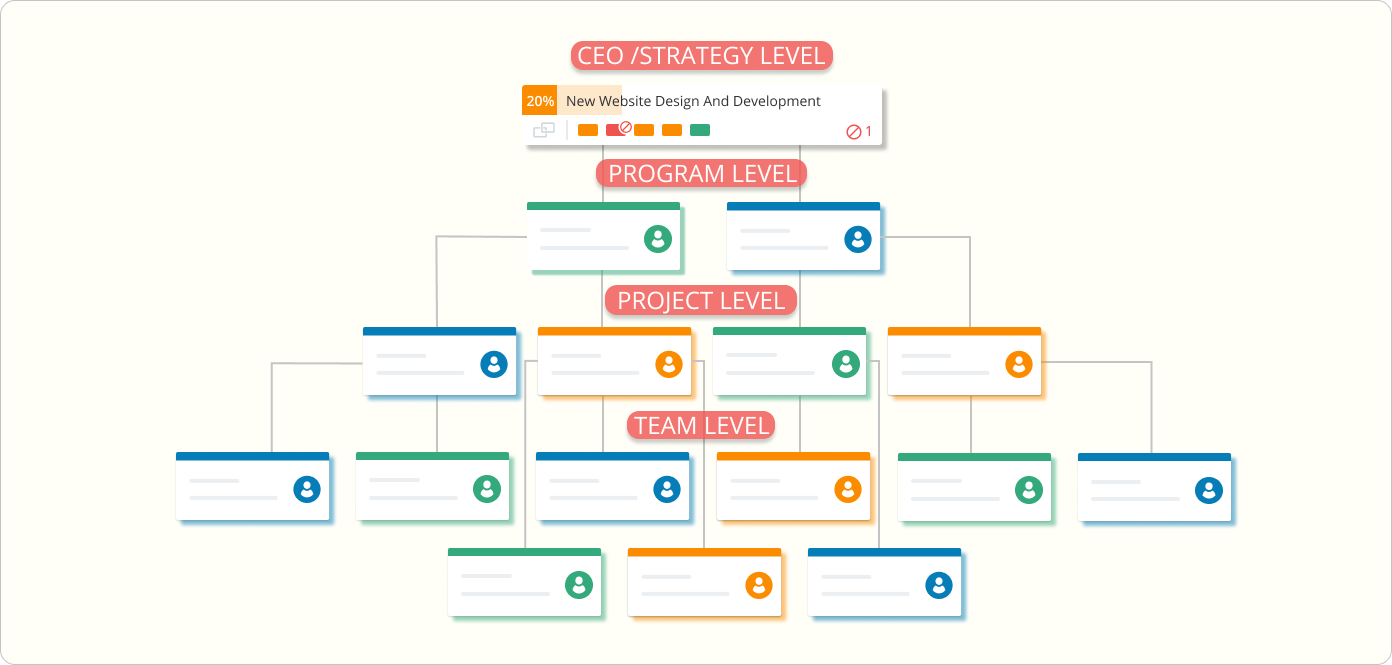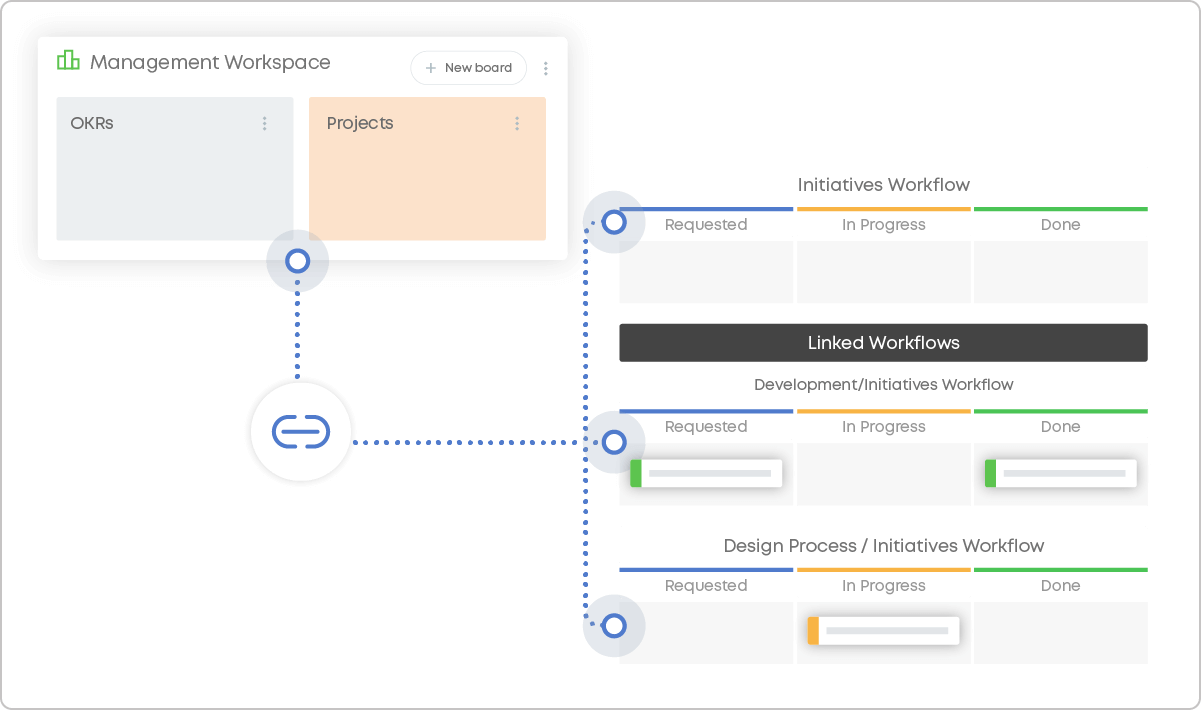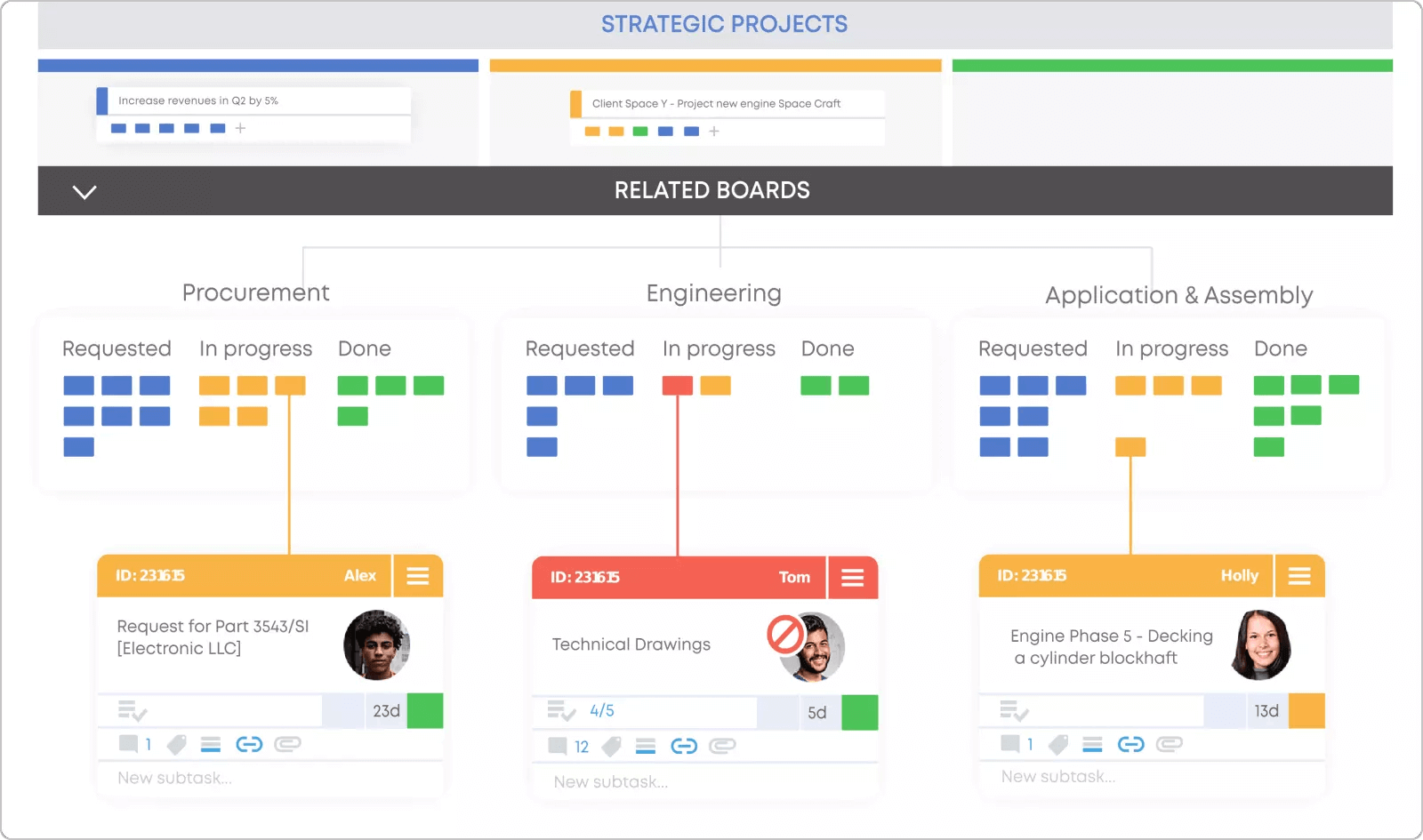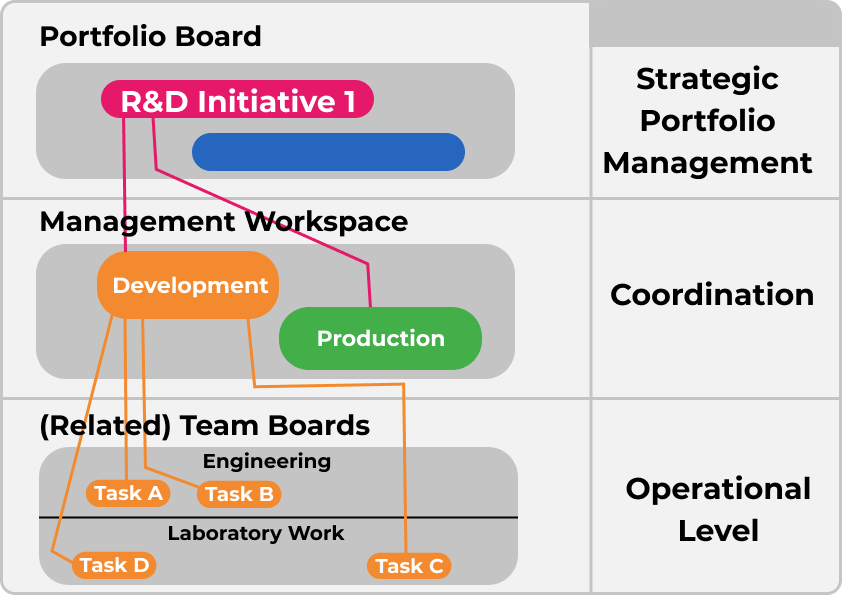What does it take to navigate through today’s dynamic business landscape? Business agility seems to be the prevalent answer and promise behind digital transformation initiatives. However, as per the State of Agile Report, enterprises face significant challenges in attaining agility despite recognizing its importance. The crucial missing link lies in effectively aligning strategy and delivery, an area that often proves troublesome.
That's where strategic portfolio management (SPM) steps in. By meticulously selecting, prioritizing, and managing a collection of initiatives, businesses are driving the focus toward aligning work to delivering customer value. In this article, we'll dive into the importance, benefits, and practical side of strategic portfolio management.
What Is Strategic Portfolio Management?
Strategic portfolio management is the process of selecting, prioritizing, and managing a collection of projects to align with an organization's strategic initiatives and maximize value. It involves making informed decisions about resource allocation, risk management, and project prioritization to achieve overall business goals.
Why Is Strategic Portfolio Management Important?
Gartner's alarming projection predicts that by 2025, 70% of digital transformation investments will fail due to the absence of strategic portfolio management, highlighting the significance of SPM.
Strategic portfolio management equips organizations with the tools to achieve business outcomes by harmonizing their strategy with their operations. It empowers them to seamlessly plan, execute, and monitor the delivery of value. Furthermore, effective strategic portfolio management practices enable organizations to enhance their ability to make informed decisions, improve their organizational agility, and increase the likelihood of achieving their long-term goals.
What Are the 3 Steps in a Strategic Portfolio Management Process?
Strategic portfolio management encompasses three essential steps: formulating a strategy, ensuring alignment between goals and execution, and delivering optimal customer value. Let’s look at each step in more detail.
Step 1: Strategize at the Top Level
Defining strategic initiatives to work toward is the fundamental step of successfully implementing the strategic portfolio management approach. These high-level initiatives are directly connected and contribute to achieving the company’s strategy and goals. The next step is to create a comprehensive strategic roadmap that would drive all operational efforts in the same direction.
 Visualizing strategic portfolio management roadmap
Visualizing strategic portfolio management roadmap
Step 2: Align High-Level Projects with Strategic Initiatives
Creating a strong link between companies’ strategic goals and high-level projects is vital. Strategic portfolio management enables this meaningful connection between the business strategy and project strategy. SPM is focused on elevating this link so that the right projects are contributing to achieving the set strategy.
Companies can bring better alignment between strategy and execution by consolidating the visualization of business and project strategic initiatives in one central location. This allows them to identify and define the initiatives necessary to achieve those goals, fostering a seamless connection between strategic vision and practical execution.
 Visualizing the connection between high-level projects and strategic initiatives
Visualizing the connection between high-level projects and strategic initiatives
Step 3: Deliver Value
Once a strategic portfolio structure is established, the next step is to understand how the strategy aligns with the ongoing service delivery processes or how teams manage work to deliver value. One way to achieve this is by adopting different methods and frameworks, such as Kanban or Scrum. These Agile methodologies provide teams with structured approaches to managing and tracking their work, promoting efficiency and collaboration.
Kanban, for instance, visualizes work on a Kanban board, allowing teams to prioritize work, identify bottlenecks, and optimize workflows. Scrum, on the other hand, organizes work into time-bound iterations called sprints, with regular meetings and clear roles to facilitate iterative progress. By leveraging these approaches, teams can enhance productivity, transparency, and adaptability, resulting in improved delivery of value.
 Connecting strategic objectives to delivery
Connecting strategic objectives to delivery
Benefits of Strategic Portfolio Management
Strategic portfolio management brings numerous benefits to organizations which all come down to improving the agility of enterprise-level decision-making and enterprise-wide strategic execution. As revealed by a recent McKinsey survey, organizations that prioritize both speed and quality in their decision-making are more likely to outperform their peers. However, only one in three survey participants reported that their organizations consistently achieve fast, high-quality decision-making.
Here are a few common advantages of strategic portfolio management done well, which can drive business success and competitive edge.
- Enhanced Strategic Alignment: By prioritizing initiatives that contribute to the overall mission and goals, organizations can focus efforts on areas that generate the most value and prevent misalignments such as delayed projects, missed opportunities, or wasted budget.
- Improved Operational Efficiency: By evaluating the portfolio as a whole, decision-makers can reallocate resources to high-value initiatives and eliminate projects that no longer align with the organization's goals.
- Proactive Risk Management: By diversifying the portfolio and spreading risks across various projects and investments, organizations can minimize the potential negative impacts of project failures. The approach helps to safeguard the organization's investments and enhances its ability to adapt to changing market conditions.
- Better Operational and Organizational Agility: By continuously assessing and reprioritizing projects based on changing market conditions and strategic objectives, organizations gradually improve their ability to swiftly reallocate resources, pivot strategies, and seize emerging opportunities. In this way, SPM helps companies to optimize their portfolio to deliver maximum value, stay ahead of the competition and foster their business agility.
OKRs from the Trenches:
How Two of The Largest Organizations in the World Save Time & Money with OKRs?

Common Challenges When Implementing Strategic Portfolio Management
Implementing a strategic portfolio management approach can entail a range of challenges such as resistance, lack of alignment or inadequate project prioritization.
- Lack of Organizational Alignment: A lack of alignment between strategic objectives and operational activities is another challenge. It can occur due to unclear communication or competing priorities. To address this challenge, organizations need to establish strong alignment mechanisms, foster collaboration among departments, and create shared goals and metrics.
- Insufficient Resource Allocation: Limited resources, competing projects, and dynamic priorities can result in resource constraints. Organizations need to establish robust resource management processes that involve evaluating resource availability, identifying bottlenecks, and making informed decisions about resource allocation.
- Inadequate Project Prioritization: Prioritizing projects within the portfolio can be challenging, especially when dealing with a large number of initiatives. Inadequate project prioritization can result in resource overallocation, delays, or failure to deliver the desired value. To address this challenge, organizations should establish clear criteria and frameworks for prioritization, considering factors such as strategic alignment, value potential, risk, and resource requirements.
- Lack of Portfolio Transparency: A lack of portfolio transparency can hinder both effective decision-making and progress tracking. Without clear visibility into the status, progress, and interdependencies of projects, organizations struggle to make informed portfolio-level decisions. Establishing adequate portfolio reporting mechanisms, implementing project management tools, and fostering a culture of transparency and accountability are crucial to addressing this challenge.
Strategic Portfolio Management in Practice
As discussed, strategic portfolio management focuses on aligning an organization's portfolio of projects, programs, and investments with its strategic objectives. Here’s how the process can unravel in practice.
Portfolio Management with Flight Levels to Improve Business Agility
Visualizing the link between strategic portfolio management, cross-team coordination, and daily operations can be achieved by leveraging the Flight Levels business agility concept by Klaus Leopold.
The core idea is that for efficient management of work from strategy to execution, it is essential to visually represent these three levels within an organization: organizational strategy, team coordination, and day-to-day operations.
To establish this hierarchical alignment between strategic objectives and operations, portfolio managers can use interconnected boards to implement the Flight levels.
To visualize the strategic initiatives and track projects within a portfolio, portfolio managers can use dedicated Portfolio boards. Think of these as a collection of both goals and strategic initiatives in a single place. The idea is to prioritize the top-level projects based on your business strategy and then break them down using the lower levels.
Moving down to coordination, the Flight levels concept emphasizes defining projects based on your strategic initiatives and visualizing their flow across teams. The lowest operational level is where the teams can use different tools, such as Kanban boards, to break down the projects into their own team deliverables and visualize the flow of individual work items.
Putting this structure in practice provides a comprehensive overview across the organizational work hierarchy, so you can be aware of what's going on and become equipped to change direction when necessary. The goal is to create a central hub for portfolio management and maintain visibility across multiple teams.
Learn more about how chemical company Schlenk enhanced its R&D project performance by combining the Flight Levels concept with the project portfolio management capabilities of Businessmap (formerly Kanbanize) in our detailed case study.
 Connecting strategic portfolio management, cross-team coordination, and daily operations using the Flight levels concept
Connecting strategic portfolio management, cross-team coordination, and daily operations using the Flight levels concept
From Project and Program Management to Strategic Portfolio Management
The evolution from project management and program management to strategic portfolio management signifies the transition organizations need to make in order to achieve strategic results. Shifting from managing individual projects to a portfolio-based approach allows organizations to align initiatives with strategic objectives, optimize resource allocation, and adapt to changing market conditions.
While project management focuses on the successful delivery of individual projects and program management coordinates a group of related projects, strategic portfolio management takes a broader perspective. It recognizes that organizations need to align their project and program efforts with strategic objectives to maximize value creation. Ultimately, strategic portfolio management provides a holistic view, enabling better decision-making, greater agility, resilience, and competitiveness in today's ever-changing business environment.
Businessmap is the most flexible software
to align work with company goals









